
How to Use MQ131: Examples, Pinouts, and Specs
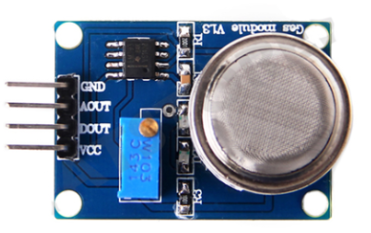
 Design with MQ131 in Cirkit Designer
Design with MQ131 in Cirkit DesignerIntroduction
The MQ131 is a semiconductor sensor designed for the detection of ozone (O3) in the air. It is based on the principle of a chemiresistor, where the resistance of the sensing material changes in response to the presence of ozone gas. This sensor is widely used in applications such as air quality monitoring, environmental monitoring, and industrial process control where accurate measurement of ozone concentration is critical.
Explore Projects Built with MQ131
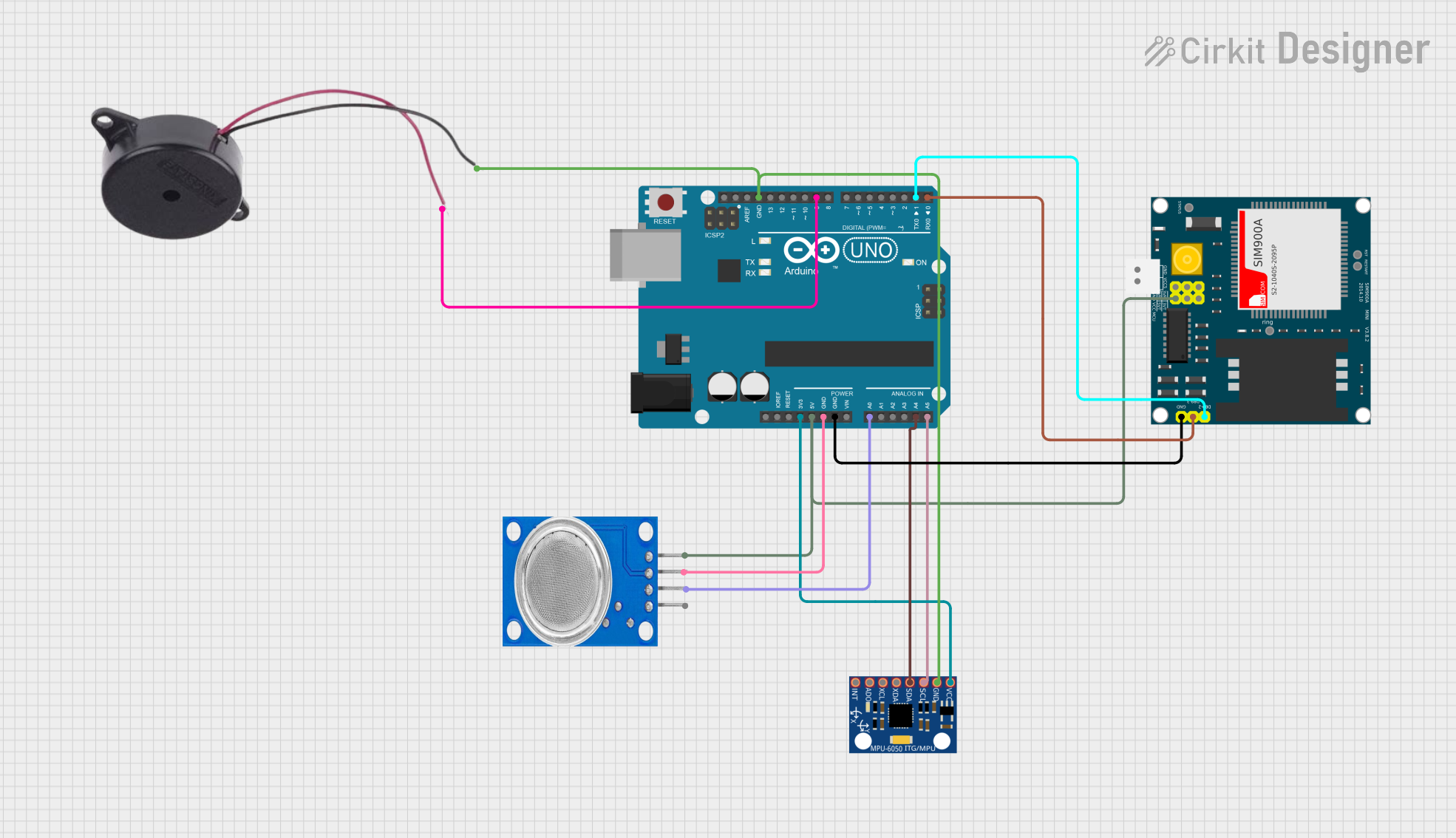
 Open Project in Cirkit Designer
Open Project in Cirkit Designer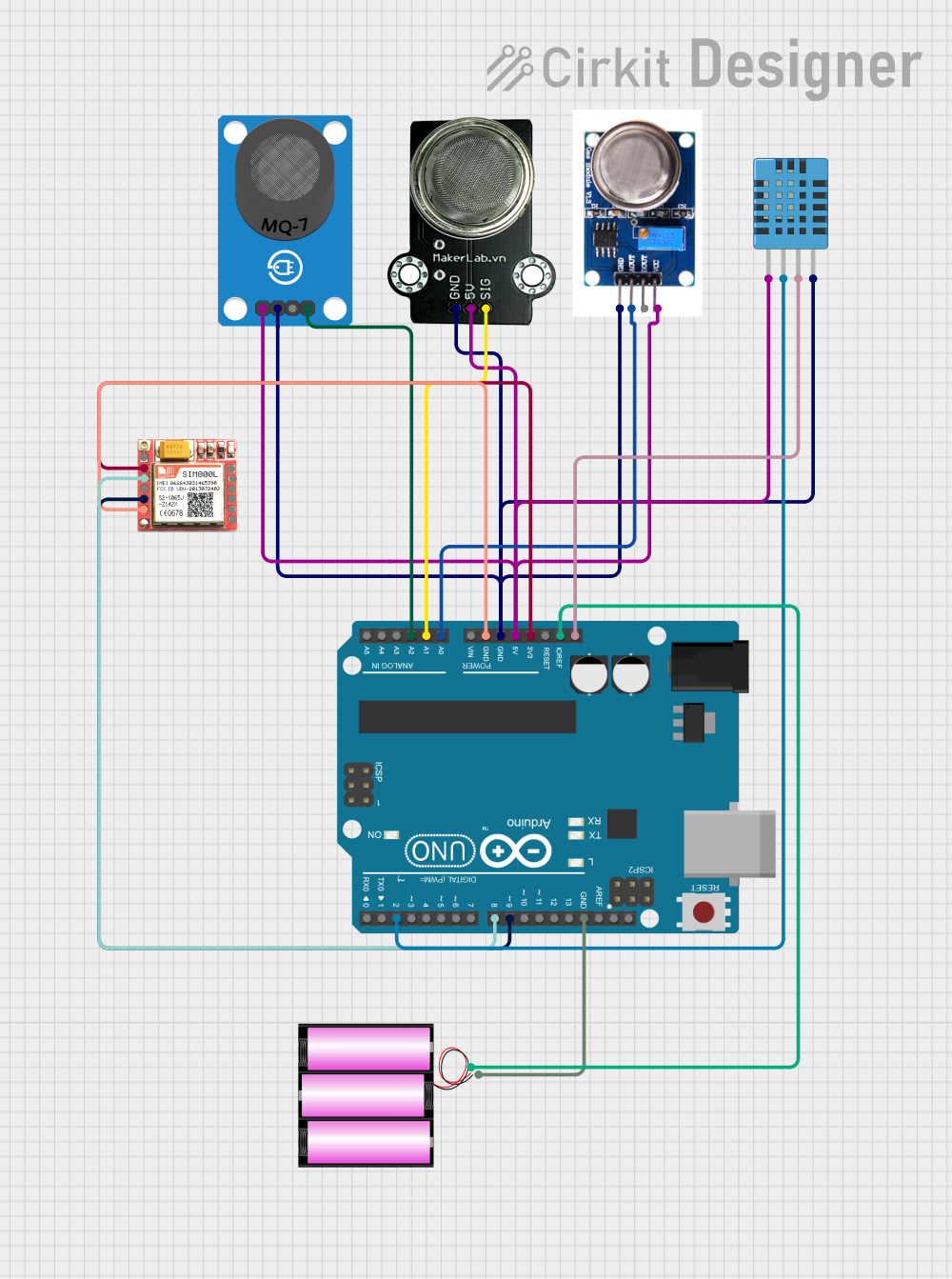
 Open Project in Cirkit Designer
Open Project in Cirkit Designer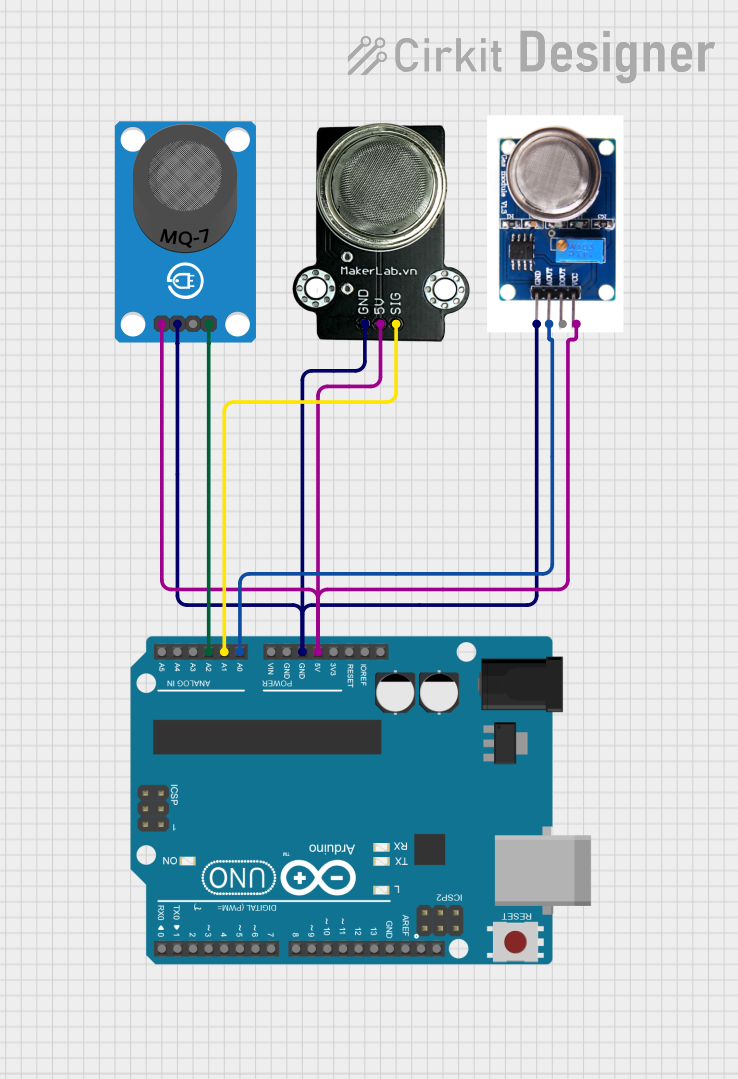
 Open Project in Cirkit Designer
Open Project in Cirkit Designer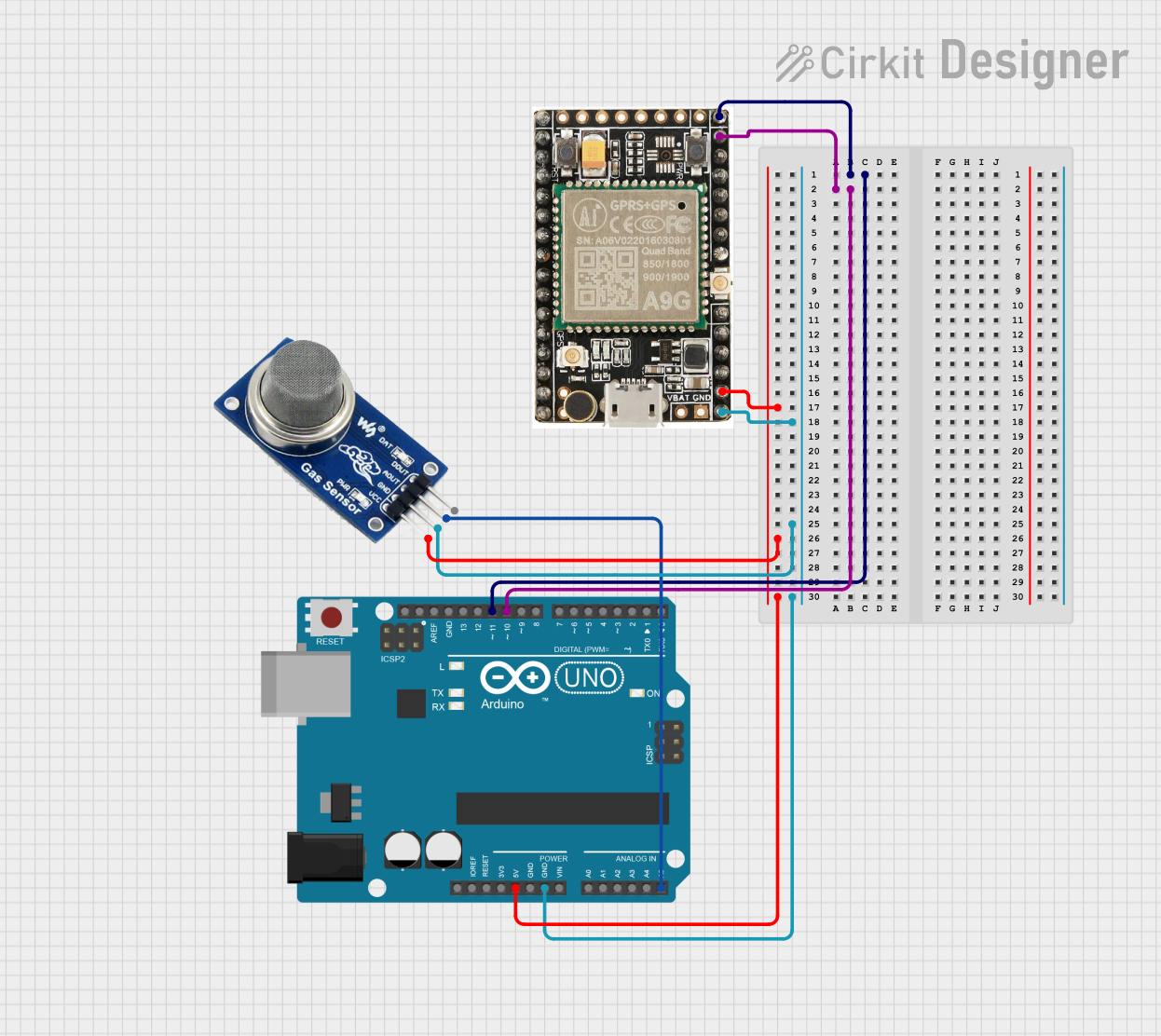
 Open Project in Cirkit Designer
Open Project in Cirkit DesignerExplore Projects Built with MQ131

 Open Project in Cirkit Designer
Open Project in Cirkit Designer
 Open Project in Cirkit Designer
Open Project in Cirkit Designer
 Open Project in Cirkit Designer
Open Project in Cirkit Designer
 Open Project in Cirkit Designer
Open Project in Cirkit DesignerCommon Applications and Use Cases
- Air quality monitoring systems
- Environmental monitoring stations
- Industrial ozone detection and safety systems
- Portable ozone detectors
- HVAC systems to monitor indoor air quality
Technical Specifications
Key Technical Details
- Target Gas: Ozone (O3)
- Detection Range: 10 ppb to 2 ppm O3
- Preheat Time: ≥ 48 hours for initial use
- Response Time: ≤ 90 seconds
- Recovery Time: ≤ 90 seconds
- Working Voltage: 5V ± 0.1
- Heater Voltage: 6V (typical)
- Heater Power Consumption: Approx. 140mW
- Operating Temperature: -10°C to 40°C
- Storage Temperature: -20°C to 50°C
- Humidity Range: 15% to 90% RH non-condensing
Pin Configuration and Descriptions
| Pin Number | Description | Notes |
|---|---|---|
| 1 | VCC | Power supply (5V) |
| 2 | GND | Ground |
| 3 | Digital Out (D0) | Digital output signal |
| 4 | Analog Out (A0) | Analog output signal |
| 5 | Heater Control (H) | Controls the heating element |
Usage Instructions
Integration with a Circuit
- Power Supply: Connect the VCC pin to a 5V power source and the GND pin to the ground.
- Signal Output: The A0 pin provides an analog voltage output that varies with the ozone concentration. Connect this pin to an analog input on your microcontroller.
- Digital Output (Optional): The D0 pin can be used for a simple high/low threshold detection. Connect this to a digital input on your microcontroller.
- Heater Control (Optional): The H pin can be used to turn the heating element on or off, which is necessary for the sensor to function properly. This can be controlled via a digital output from your microcontroller.
Important Considerations and Best Practices
- Calibration: The MQ131 requires calibration to ensure accurate readings. This should be done in an environment with a known ozone concentration.
- Preheating: Before initial use, the sensor should be preheated for at least 48 hours to stabilize its readings.
- Temperature and Humidity: Ensure that the sensor operates within the specified temperature and humidity range for accurate results.
- Avoid Contaminants: Keep the sensor away from organic solvents, silicon compounds, and high-concentration gases to prevent poisoning the sensor.
Example Code for Arduino UNO
// MQ131 Ozone Sensor Example Code for Arduino UNO
const int analogPin = A0; // Analog output from the MQ131 sensor
const int heaterControlPin = 2; // Digital pin to control the heater
void setup() {
pinMode(heaterControlPin, OUTPUT);
digitalWrite(heaterControlPin, HIGH); // Turn on the heater
Serial.begin(9600);
}
void loop() {
int sensorValue = analogRead(analogPin); // Read the analog value from sensor
float ozoneConcentration = sensorValue * (10.0 / 1023.0); // Convert to ppm (example)
Serial.print("Ozone Concentration: ");
Serial.print(ozoneConcentration);
Serial.println(" ppm");
delay(1000); // Wait for 1 second before the next read
}
Troubleshooting and FAQs
Common Issues
- Inaccurate Readings: If the sensor provides inaccurate readings, ensure that it has been properly calibrated and that it has been preheated for the recommended time.
- No Response: Check the power supply and wiring connections if the sensor shows no response.
- Drifting Values: Sensor values may drift over time. Regular calibration is necessary to maintain accuracy.
Solutions and Tips for Troubleshooting
- Calibration: Perform calibration in a controlled environment with a known ozone concentration.
- Check Connections: Ensure all connections are secure and free from corrosion or damage.
- Environmental Factors: Verify that the sensor is not being affected by extreme temperature or humidity.
FAQs
Q: How often should the MQ131 sensor be calibrated? A: Calibration frequency depends on the application, but it is generally recommended to calibrate the sensor every 3 to 6 months.
Q: Can the MQ131 sensor detect other gases? A: The MQ131 is designed for ozone detection, but it may show some sensitivity to other gases. It is important to use the sensor in an environment where the target gas is known.
Q: Is the MQ131 sensor reusable after exposure to high gas concentrations? A: Yes, the sensor is reusable, but exposure to high concentrations of ozone or other gases may shorten its lifespan or require recalibration.